Hurricane Katrina
From Wikipedia, the free encyclopedia
For other storms of the same name, see Tropical Storm Katrina (disambiguation).
| Category 5 major hurricane (SSHWS/NWS) | |

Hurricane Katrina at peak strength
on August 28, 2005 | |
| Formed | August 23, 2005 |
|---|---|
| Dissipated | August 31, 2005[1] |
| (Extratropical after August 30, 2005) | |
| Highest winds | 1-minute sustained:175 mph (280 km/h) |
| Lowest pressure | 902 mbar (hPa); 26.64 inHg |
| Fatalities | 1,833 in U.S. confirmed[1] |
| Damage | $108 billion (2005 USD) (Costliest on record[2]) |
| Areas affected | Bahamas, South Florida,Cuba, Louisiana (especiallyGreater New Orleans),Mississippi, Alabama, Florida Panhandle, most of easternNorth America |
| Part of the 2005 Atlantic hurricane season | |
| Hurricane Katrina |
|---|
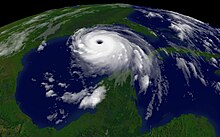 |
| 2005 Atlantic hurricane season |
| General |
| Impact |
| Relief |
| Analysis |
| External links |
|
Hurricane Katrina was the deadliest and most destructive Atlantic tropical cyclone of the 2005 Atlantic hurricane season. It is the costliestnatural disaster, as well as one of the five deadliest hurricanes, in the history of the United States. Katrina is the seventh most intense Atlantic hurricane ever recorded, part of the 2005 season that included three of the six most intense Atlantic hurricanes ever documented (along with #1Wilma and #4 Rita). At least 1,833 people died in the hurricane and subsequent floods, making it the deadliest U.S. hurricane since the 1928 Okeechobee hurricane; total property damage was estimated at $108 billion (2005 USD),[1] roughly four times the damage brought by Hurricane Andrew in 1992.[3]
Hurricane Katrina formed over the Bahamas on August 23, 2005, and crossed southern Florida as a moderate Category 1 hurricane, causing some deaths and flooding there before strengthening rapidly in the Gulf of Mexico. The hurricane strengthened to a Category 5 hurricane over the warm Gulf water, but weakened before making its second landfall as a Category 3 hurricane on the morning of Monday, August 29, in southeast Louisiana. It caused severe destruction along the Gulf coast from central Florida to Texas, much of it due to the storm surge. The most significant number of deaths occurred in New Orleans, Louisiana, which flooded as the levee system catastrophically failed, in many cases hours after the storm had moved inland.[4] Eventually 80% of the city and large tracts of neighboring parishes became flooded, and the floodwaters lingered for weeks.[4] However, the worst property damage occurred in coastal areas, such as Mississippi beachfront towns; over 90 percent of these were flooded. Boats and casino barges rammed buildings, pushing cars and houses inland; water reached 6–12 miles (10–19 km) from the beach.
The hurricane surge protection failures in New Orleans are considered the worst civil engineering disaster in U.S. history[5] and prompted a lawsuit against the U.S. Army Corps of Engineers (USACE), the designers and builders of the levee system as mandated by the Flood Control Act of 1965. Responsibility for the failures and flooding was laid squarely on the Army Corps in January 2008 by Judge Stanwood Duval, U.S.District Court ,[6] but the federal agency could not be held financially liable because of sovereign immunity in the Flood Control Act of 1928. There was also an investigation of the responses from federal, state and local governments, resulting in the resignation of Federal Emergency Management Agency (FEMA) director Michael D. Brown, and of New Orleans Police Department (NOPD) Superintendent Eddie Compass.
Several agencies including the United States Coast Guard (USCG), National Hurricane Center (NHC), and National Weather Service (NWS) were commended for their actions. They provided accurate hurricane weather tracking forecasts with sufficient lead time.[7]
Contents
[hide]Meteorological history
Main article: Meteorological history of Hurricane Katrina
Hurricane Katrina formed as Tropical Depression Twelve over the southeastern Bahamas on August 23, 2005, as the result of an interaction of a tropical wave and the remains of Tropical Depression Ten. The system was upgraded to tropical storm status on the morning of August 24 and at this point, the storm was given the name Katrina. The tropical storm continued to move towards Florida , and became a hurricane only two hours before it made landfall between Hallandale Beach and Aventura on the morning of August 25. The storm weakened over land, but it regained hurricane status about one hour after entering the Gulf of Mexico.[1]
The storm rapidly intensified after entering the Gulf, growing from a Category 3 hurricane to a Category 5 hurricane in just nine hours. This rapid growth was due to the storm's movement over the "unusually warm" waters of the Loop Current, which increased wind speeds.[8] On August 27, the storm reached Category 3 intensity on the Saffir-Simpson hurricane wind scale, becoming the third major hurricane of the season. An eyewall replacement cycle disrupted the intensification, but caused the storm to nearly double in size. Katrina again rapidly intensified, attaining Category 5 status on the morning of August 28 and reached its peak strength at 1800 UTC that day, with maximum sustained winds of 175 mph (280 km/h) and a minimum central pressure of 902 mbar (26.6 inHg). The pressure measurement made Katrina the fourth most intense Atlantic hurricane on record at the time, only to be surpassed by Hurricanes Rita and Wilma later in the season; it was also the strongest hurricane ever recorded in the Gulf of Mexico at the time. However, this record was later broken by Hurricane Rita.[1]
Katrina made its second landfall at 1110 UTC on August 29 as a Category 3 hurricane with sustained winds of 125 mph (200 km/h) near Buras-Triumph, Louisiana. At landfall, hurricane-force winds extended outward 120 miles (190 km) from the center and the storm's central pressure was 920 mbar (27 inHg). After moving over southeastern Louisiana and Breton Sound, it made its third landfall near the Louisiana–Mississippi border with 120 mph (190 km/h) sustained winds, still at Category 3 intensity. Katrina maintained strength well into Mississippi, finally losing hurricane strength more than 150 miles (240 km) inland near Meridian, Mississippi. It was downgraded to a tropical depression near Clarksville, Tennessee, but its remnants were last distinguishable in the eastern Great Lakes region on August 31, when it was absorbed by a frontal boundary. The resultingextratropical storm moved rapidly to the northeast and affected eastern Canada.[1]
Preparations
Main article: Preparations for Hurricane Katrina
Federal government
On the afternoon of August 26, the NHC realized that Katrina had yet to make the turn toward the Florida Panhandle and ended up revising the predicted track of the storm from the panhandle to the Mississippi coast.[9] The NHC issued a hurricane watch for southeastern Louisiana, including the New Orleans area at 1500 UTC on August 27. Later that day, NHC extended the watch to cover the Mississippi and Alabama coastlines as well as the Louisiana coast to Intracoastal City.[1]
The United States Coast Guard began pre-positioning resources in a ring around the expected impact zone and activated more than 400 reservists. On August 27, it moved its personnel out of the New Orleans region prior to the mandatory evacuation.[10] Aircrews from the Aviation Training Center, in Mobile, staged rescue aircraft from Texas to Florida.[11] All aircraft were returning towards the Gulf of Mexico by the afternoon of August 29. Aircrews, many of whom lost their homes during the hurricane, began a round-the-clock rescue effort in New Orleans, and along the Mississippi and Alabama coastlines.[12]
President of the United States George W. Bush declared a state of emergency in selected regions of Louisiana, Alabama and Mississippi on August 27.[13] That same evening, the NHC upgraded the storm alert status from hurricane watch to hurricane warning over the stretch of coastline betweenMorgan City, Louisiana, to the Alabama–Florida border, 12 hours after the watch alert had been issued, and also issued a tropical storm warning for the westernmost Florida Panhandle.[1]
During video conferences involving the president on August 28 and August 29, NHC director Max Mayfield expressed concern that Katrina might push its storm surge over the city's levees and flood walls. In one conference, he stated, "I do not think anyone can tell you with confidence right now whether the levees will be topped or not, but that's obviously a very, very great concern."[14]
On Sunday, August 28, as the sheer size of Katrina became clear, the NHC extended the tropical storm warning zone to cover most of the Louisiana coastline and a larger portion of theFlorida Panhandle. The National Weather Service's New Orleans/Baton Rouge office issued a vividly worded bulletin predicting that the area would be "uninhabitable for weeks" after "devastating damage" caused by Katrina, which at that time rivaled the intensity of Hurricane Camille.[15] "On Sunday, August 28, President Bush spoke with Governor Blanco to encourage her to order a mandatory evacuation of New Orleans."[16]
Voluntary and mandatory evacuations were issued for large areas of southeast Louisiana as well as coastal Mississippi and Alabama. About 1.2 million residents of the Gulf Coast were covered under a voluntary or mandatory evacuation order.[1]
Investigation of State of Emergency declaration
In a hearing on September 26, former FEMA chief Michael Brown testified before a U.S. House subcommittee about FEMA's response. During that hearing, Representative Stephen Buyer(R-IN) inquired as to why President Bush's declaration of state of emergency of August 27 had not included the coastal parishes of Orleans, Jefferson and Plaquemines.[17] (In fact, the declaration did not include any of Louisiana's coastal parishes, whereas the coastal counties were included in the declarations for Mississippi and Alabama.[18][19] Brown testified that this was because Louisiana Governor Blanco had not included those parishes in her initial request for aid, a decision that he found "shocking." After the hearing, Blanco released a copy of her letter, which showed she had requested assistance for "all the southeastern parishes including the City of New Orleans" as well specifically naming 14 parishes, including Jefferson, Orleans and Plaquemines.[20]
Gulf Coast
On August 26, the state of Mississippi activated its National Guard in preparation for the storm's landfall. Additionally, the state government activated its Emergency Operations Center the next day, and local governments began issuing evacuation orders. By 6:00 pm CDT on August 28, 11 counties and cities issued evacuation orders, a number which increased to 41 counties and 61 cities by the following morning. Moreover, 57 emergency shelters were established on coastal communities, with 31 additional shelters available to open if needed.[7] Louisiana's hurricane evacuation plan calls for local governments in areas along and near the coast to evacuate in three phases, starting with the immediate coast 50 hours before the start of tropical storm force winds. Persons in areas designated Phase II begin evacuating 40 hours before the onset of tropical storm winds and those in Phase III areas (including New Orleans) evacuate 30 hours before the start of such winds.[21]
Many private caregiving facilities that relied on bus companies and ambulance services for evacuation were unable to evacuate their charges because they waited too long. Louisiana's Emergency Operations Plan Supplement 1C (Part II, Section II, Paragraph D) calls for use of school and other public buses in evacuations.[22] Although buses that later flooded were available to transport those dependent upon public transportation, not enough bus drivers were available to drive them as Governor Blanco did not sign an emergency waiver to allow any licensed driver to transport evacuees on school buses.[23] However, 20 year old Jabbar Gibson armed with only a standard operator's permit took it upon himself to take a school bus and drive it to Houston with 50 to 70 evacuees.[24][25] Some estimates claimed that 80% of the 1.3 million residents of the greater New Orleans metropolitan area evacuated, leaving behind substantially fewer people than remained in the city during the Hurricane Ivan evacuation.[26]
By Sunday, August 28, most infrastructure along the Gulf Coast had been shut down, including all freight and Amtrak rail traffic into the evacuation areas as well as the Waterford Nuclear Generating Station.[27] The NHC maintained the coastal warnings until late on August 29, by which time Hurricane Katrina was over central Mississippi.[1]
City of New Orleans
See also: Hurricane preparedness for New Orleans
By August 26, the possibility of unprecedented cataclysm was already being considered. Many of the computer models had shifted the potential path of Katrina 150 miles (240 km) westward from the Florida Panhandle, putting the city of New Orleans directly in the center of their track probabilities; the chances of a direct hit were forecast at 17%, with strike probability rising to 29% by August 28.[28] This scenario was considered a potential catastrophe because some parts of New Orleans and the metro area are below sea level. Since the storm surge produced by the hurricane's right-front quadrant (containing the strongest winds) was forecast to be 28 feet (8.5 m), emergency management officials in New Orleans feared that the storm surge could go over the tops of levees protecting the city, causing major flooding.[29]
At a news conference at 10 am on August 28, shortly after Katrina was upgraded to a Category 5 storm, New Orleans mayor Ray Naginordered the first-ever mandatory evacuation of the city, calling Katrina "a storm that most of us have long feared."[30] The city government also established several "refuges of last resort" for citizens who could not leave the city, including the massive Louisiana Superdome, which sheltered approximately 26,000 people and provided them with food and water for several days as the storm came ashore.[31][32]
Florida
Many people living in the South Florida area were unaware when Katrina strengthened from a tropical storm to a hurricane in one day and struck southern Florida near the Miami-Dade–Broward county line. The hurricane struck between the cities of Aventura, in Miami-Dade County, and Hallandale, in Broward County, on Thursday, August 25, 2005. However, National Hurricane Center (NHC) forecasts had correctly predicted that Katrina would intensify to hurricane strength before landfall, and hurricane watches and warnings were issued 31.5 hours and 19.5 hours before landfall, respectively — only slightly less than the target thresholds of 36 and 24 hours.[1]
Florida Governor Jeb Bush declared a state of emergency on August 24 in advance of Hurricane Katrina's landfall in Florida. Shelters were opened and schools closed in several counties in the southern part of the state. A number of evacuation orders were also issued, mostly voluntary, although a mandatory evacuation was ordered for vulnerable housing in Martin County.[33]
Impact
Main article: Hurricane Katrina effects by region
| Alabama | 2 |
| Florida | 14 |
| Georgia | 2 |
| Kentucky | 1 |
| Louisiana | 1,577* |
| Mississippi | 238 |
| Ohio | 2 |
| Total | 1,836[34] |
|---|---|
| Missing | 135[35] |
| *Includes out-of-state evacuees counted by Louisiana | |
On August 29, Katrina's storm surge caused 53 different levee breaches in greater New Orleans, submerging eighty percent of the city. A June 2007 report by the American Society of Civil Engineers indicated that two-thirds of the flooding were caused by the multiple failures of the city's floodwalls.[36] The storm surge also devastated the coasts of Mississippi and Alabama, making Katrina the most destructive and costliest natural disaster in the history of the United States, and the deadliest hurricane since the 1928 Okeechobee Hurricane. The total damage from Katrina is estimated at $108 billion (2005 U.S. dollars).[1][37]
The confirmed death toll is 1,836, with one fatality in Kentucky, two each in Alabama, Georgia, and Ohio, 14 in Florida, 238 in Mississippi, and 1,577 in Louisiana.[34][35] However, 135 people remain categorized as missing in Louisiana,[35]and many of the deaths are indirect, but it is almost impossible to determine the exact cause of some of the fatalities.[1]
Federal disaster declarations covered 90,000 square miles (230,000 km2) of the United States, an area almost as large as the United Kingdom. The hurricane left an estimated three million people without electricity. On September 3, 2005,Homeland Security Secretary Michael Chertoff described the aftermath of Hurricane Katrina as "probably the worst catastrophe, or set of catastrophes," in the country's history, referring to the hurricane itself plus the flooding of New Orleans.[38]
Even in 2010, debris remained in some coastal communities.[39]
Florida and Cuba
Main article: Effects of Hurricane Katrina in Florida
Hurricane Katrina first made landfall on August 25, 2005, in South Florida, where it hit as a Category 1 hurricane, with 80 mph (130 km/h) winds. Rainfall was heavy in places and exceeded 14 inches (350 mm) in Homestead, Florida,[1] and a storm surge of 3–5 feet (0.9–1.5 m) was measured in parts of Monroe County.[37] More than 1 million customers were left without electricity, and damage in Florida was estimated from $1–2 billion, with most of the damage coming from flooding and overturned trees. There were 14 fatalities reported in Florida as a result of Hurricane Katrina.[1]
Most of the Florida Keys experienced tropical-storm force winds from Katrina as the storm's center passed to the north, with hurricane force winds reported in the Dry Tortugas. Rainfall was also high in the islands, with 10 inches (250 mm) falling on Key West. On August 26, a strong F1 tornadoformed from an outer rain band of Katrina and struck Marathon. The tornado damaged a hangar at the airport there and caused an estimated $5 million in damage.[40]
Along the Florida Panhandle the storm surge was typically about 5 feet (1.5 m) and along the west-central Florida coast there was a minor surge of 1–2 feet (0.3–0.6 m). In Pensacola, Florida, 56 mph (90 km/h) winds were recorded on August 29. The winds caused damage to some trees and structures and there was some minor flooding in the Panhandle. There were two indirect fatalities from Katrina in Walton County as a result of a traffic accident.[1] In the Florida Panhandle, 77,000 customers lost power.[41]
Although Hurricane Katrina stayed well to the north of Cuba, on August 29 it brought tropical-storm force winds and rainfall of over 8 inches (200 mm) to western regions of the island. Telephone and power lines were damaged and around 8,000 people were evacuated in the Pinar del Río Province. According to Cuban television reports the coastal city of Surgidero de Batabano was 90% underwater.[42]
Louisiana
On August 29, Hurricane Katrina made landfall near Buras-Triumph, Louisiana, with 125 mph (200 km/h) winds, as a strong Category 3 storm. However, as it had only just weakened from Category 4 strength and the radius of maximum winds was large, it is possible that sustained winds of Category 4 strength briefly impacted extreme southeastern Louisiana. Although the storm surge to the east of the path of the eye in Mississippi was higher, a very significant surge affected the Louisiana coast. The height of the surge is uncertain because of a lack of data, although a tide gauge inPlaquemines Parish indicated a storm tide in excess of 14 feet (4.3 m) and a 12-foot (3.7 m) storm surge was recorded in Grand Isle. Hurricane Katrina made final landfall near the mouth of the Pearl River, with the eye straddling St. Tammany Parish, Louisiana, and Hancock County, Mississippi, on the morning of August 29 at about 9:45M CST.[1]
Hurricane Katrina also brought heavy rain to Louisiana, with 8–10 inches (200–250 mm) falling on a wide swath of the eastern part of the state. In the area around Slidell, the rainfall was even higher, and the highest rainfall recorded in the state was approximately 15 inches (380 mm). As a result of the rainfall and storm surge the level of Lake Pontchartrain rose and caused significant flooding along its northeastern shore, affecting communities from Slidell to Mandeville. Several bridges were destroyed, including the I-10 Twin Span Bridge connecting Slidell to New Orleans.[1] Almost 900,000 people in Louisiana lost power as a result of Hurricane Katrina.[43]
Katrina’s storm surge inundated all parishes surrounding Lake Pontchartrain, including St. Tammany, Tangipahoa, St. John the Baptist and St. Charles Parishes. St. Tammany Parish received a two-part storm surge. The first surge came as Lake Pontchartrain rose and the storm blew water from the Gulf of Mexico into the lake. The second came as the eye of Katrina passed, westerly winds pushed water into a bottleneck at the Rigolets Pass, forcing it farther inland. The range of surge levels in eastern St. Tammany Parish is estimated at 13–16 feet (4.0–4.9 m), not including wave action.[44]
Hard-hit St. Bernard Parish was flooded because of breaching of the levees that contained a navigation channel called the Mississippi River Gulf Outlet (MR-GO) and the breach of the 40 Arpent canal levee that was designed and built by the Orleans Levee Board. The search for the missing was undertaken by the St. Bernard Fire Department because of the assets of theUnited States Coast Guard being diverted to New Orleans. In the months after the storm, many of the missing were tracked down by searching flooded homes, tracking credit card records, and visiting homes of family and relatives.[45]
According to the U.S. Dept. of Housing and Urban Development, in St. Bernard Parish, 81% (20,229) of the housing units were damaged. In St. Tammany Parish, 70% (48,792) were damaged and in Placquemines Parish 80% (7,212) were damaged.[46]
In addition, the combined effect of Hurricanes Katrina and Rita was the destruction of an estimated 562 square kilometres (217 sq mi) of coastal wetlands in Louisiana.[47]
New Orleans
Main articles: Effects of Hurricane Katrina in New Orleans and 2005 levee failures in Greater New Orleans
As the eye of Hurricane Katrina swept to the northeast, it subjected the city to hurricane conditions for hours. Although power failures prevented accurate measurement of wind speeds in New Orleans, there were a few measurements of hurricane-force winds. From this the NHC concluded that it is likely that much of the city experienced sustained winds of Category 1 or Category 2 strength.
Katrina's storm surge led to 53 levee breaches in the federally built levee system protecting metro New Orleans and the failure of the 40 Arpent Canal levee. Nearly every levee in metro New Orleans was breached as Hurricane Katrina passed just east of the city limits. Failures occurred in New Orleans and surrounding communities, especially St. Bernard Parish. The Mississippi River Gulf Outlet (MR-GO) breached its levees in approximately 20 places, flooding much of east New Orleans, most of Saint Bernard Parish and the East Bank of Plaquemines Parish. The major levee breaches in the city included breaches at the 17th Street Canal levee, the London Avenue Canal, and the wide, navigable Industrial Canal, which left approximately 80% of the city flooded.[48]
Most of the major roads traveling into and out of the city were damaged. The only routes out of the city were the westbound Crescent City Connection and the Huey P. Long Bridge, as large portions of the I-10 Twin Span Bridge traveling eastbound towards Slidell, Louisiana had collapsed. Both the Lake Pontchartrain Causeway and the Crescent City Connection only carried emergency traffic.[49]
On August 29, at 7:40 am CDT, it was reported that most of the windows on the north side of the Hyatt Regency New Orleans had been blown out, and many other high rise buildings had extensive window damage.[50] The Hyatt was the most severely damaged hotel in the city, with beds reported to be flying out of the windows. Insulation tubes were exposed as the hotel's glass exterior was completely sheared off.[51]
The Superdome, which was sheltering many people who had not evacuated, sustained significant damage.[52] Two sections of the Superdome's roof were compromised and the dome's waterproof membrane had essentially been peeled off. Louis Armstrong New Orleans International Airport was closed before the storm but did not flood. On August 30, it was reopened to humanitarian and rescue operations. Limited commercial passenger service resumed at the airport on September 13 and regular carrier operations resumed in early October.[53]
Levee breaches in New Orleans also caused a significant amount of deaths, with over 700 bodies recovered in New Orleans by October 23, 2005.[54] Some survivors and evacuees reported seeing dead bodies lying in city streets and floating in still-flooded sections, especially in the east of the city. The advanced state of decomposition of many corpses, some of which were left in the water or sun for days before being collected, hindered efforts by coroners to identify many of the dead.[55]
The first deaths reported from the city were reported shortly before midnight on August 28, as three nursing home patients died during an evacuation to Baton Rouge, most likely from dehydration. While there were also early reports of fatalities amid mayhem at the Superdome, only six deaths were confirmed there, with four of these originating from natural causes, one from a drug overdose, and one a suicide. At the Convention Center, four bodies were recovered. One of the four is believed to be the result of a homicide.[56]
There is evidence that many prisoners were abandoned in their cells during the storm, while the guards sought shelter. Hundreds of prisoners were later registered as "unaccounted for".[57][58][59][60]
Mississippi
Main article: Effects of Hurricane Katrina in Mississippi
The Gulf coast of Mississippi suffered massive damage from the impact of Hurricane Katrina on August 29, leaving 238 people dead, 67 missing, and billions of dollars in damage: bridges, barges, boats, piers, houses and cars were washed inland.[61] Katrina traveled up the entire state, and afterwards, all 82 counties in Mississippi were declared disaster areas for federal assistance, 47 for full assistance.[61]
After making a brief initial landfall in Louisiana, Katrina had made its final landfall near the state line, and the eyewall passed over the cities of Bay St. Louis and Waveland as a Category 3 hurricane with sustained winds of 120 mph (190 km/h).[1] Katrina's powerful right-front quadrant passed over the west and central Mississippi coast, causing a powerful 27-foot (8.2 m) storm surge, which penetrated 6 miles (10 km) inland in many areas and up to 12 miles (19 km) inland along bays and rivers; in some areas, the surge crossed Interstate 10 for several miles.[1] Hurricane Katrina brought strong winds to Mississippi, which caused significant tree damage throughout the state. The highest unofficial reported wind gust recorded from Katrina was one of 135 mph (217 km/h) in Poplarville, in Pearl River County.[1]
The storm also brought heavy rains with 8–10 inches (200–250 mm) falling in southwestern Mississippi and rain in excess of 4 inches (100 mm) falling throughout the majority of the state. Katrina caused eleven tornadoes in Mississippi on August 29, some of which damaged trees and power lines.[1]
Battered by wind, rain and storm surge, some beachfront neighborhoods were completely leveled. Preliminary estimates by Mississippi officials calculated that 90% of the structures within half a mile of the coastline were completely destroyed,[62] and that storm surges traveled as much as 6 miles (10 km) inland in portions of the state's coast.[37] One apartment complex with approximately thirty residents seeking shelter inside collapsed. More than half of the 13 casinos in the state, which were floated on barges to comply with Mississippi land-based gambling laws, were washed hundreds of yards inland by waves.[62]
A number of streets and bridges were washed away. On U.S. Highway 90 along the Mississippi Gulf Coast, two major bridges were completely destroyed: the Bay St. Louis–Pass Christian[1] bridge, and the Biloxi–Ocean Springs bridge. In addition, the eastbound span of the I-10 bridge over the Pascagoula River estuary was damaged. In the weeks after the storm, with the connectivity of the coastal U.S. Highway 90 shattered, traffic traveling parallel to the coast was reduced first to State Road 11 (parallel to I-10) then to two lanes on the remaining I-10 span when it was opened.
All three coastal counties of the state were severely affected by the storm. Katrina's surge was the most extensive, as well as the highest, in the documented history of the United States; large portions of both Hancock, Harrison and Jackson Counties were inundated by the storm surge, in all three cases affecting most of the populated areas.[63] Surge covered almost the entire lower half of Hancock County, destroying the coastal communities of Clermont Harbor and Waveland, much of Bay St. Louis, and flowed up the Jourdan River, flooding Diamondhead and Kiln. In Harrison County, Pass Christian was completely inundated, along with a narrow strip of land to the east along the coast, which includes the cities of Long Beach and Gulfport; the flooding was more extensive in communities such as D'Iberville, which borders Back Bay. Biloxi, on a peninsula between the Back Bay and the coast, was particularly hard hit, especially the low-lying Point Cadet area. In Jackson County, storm surge flowed up the wide riverestuary, with the combined surge and freshwater flooding cutting the county in half. Remarkably, over 90% of Pascagoula, the easternmost coastal city in Mississippi, and about 75 miles (120 km) east of Katrina's landfall near the Louisiana-Mississippi border, was flooded from surge at the height of the storm. Other large Jackson County neighborhoods such as Porteaux Bay and Gulf Hills were severely damaged with large portions being completely destroyed, and St. Martin was hard hit; Ocean Springs, Moss Point, Gautier and Escatawpa also suffered major surge damage.
Mississippi Emergency Management Agency officials also recorded deaths in Forrest, Hinds, Warren and Leake counties. Over 900,000 people throughout the state experienced power outages.[43]
Southeast United States
Although Hurricane Katrina made landfall well to the west, Alabama and the Florida Panhandle were both affected by tropical-storm force winds and a storm surge varying from 12 to 16 feet (3.7–4.9 m) around Mobile Bay,[1] with higher waves on top. Sustained winds of 67 mph (108 km/h) were recorded in Mobile, Alabama, and the storm surge there was approximately 12 feet (3.7 m).[1] The surge caused significant flooding several miles inland along Mobile Bay. Four tornadoes were also reported in Alabama.[1] Ships, oil rigs, boats and fishing piers were washed ashore along Mobile Bay: the cargo ship M/V Caribbean Clipper and many fishing boats were grounded at Bayou La Batre.
An oil rig under construction along the Mobile River broke its moorings and floated 1.5 miles (2.4 km) northwards before striking the Cochrane Bridge just outside Mobile. No significant damage resulted to the bridge and it was soon reopened. The damage on Dauphin Island was severe, with the surge destroying many houses and cutting a new canal through the western portion of the island. An offshore oil rig also became grounded on the island. As in Mississippi, the storm surge caused significant beach erosion along the Alabama coastline.[1] More than 600,000 people lost power in Alabama as a result of Hurricane Katrina and two people died in a traffic accident in the state. Residents in some areas, such as Selma, were without power for several days.[43]
Northern and central Georgia were affected by heavy rains and strong winds from Hurricane Katrina as the storm moved inland, with more than 3 inches (75 mm) of rain falling in several areas. At least 18 tornadoes formed in Georgia on August 29, the most on record in that state for one day in August. The most serious of these tornadoes was an F2 tornado which affected Heard County and Carroll County. This tornado caused three injuries and one fatality and damaged several houses. The other tornadoes caused significant damages to buildings and agricultural facilities. In addition to the fatality caused by the F2 tornado, there was another fatality in a traffic accident.[64]
Other U.S. states and Canada
Hurricane Katrina weakened as it moved inland, but tropical-storm force gusts were recorded as far north as Fort Campbell, Kentucky, on August 30, and the winds damaged trees in New York. The remnants of the storm brought high levels of rainfall to a wide swath of the eastern United States, and rain in excess of 2 inches (50 mm) fell in parts of 20 states.[65] A number of tornadoes associated with Katrina formed on August 30 and August 31, which caused minor damages in several regions. In total, 62 tornadoes formed in eight states as a result of Katrina.[37]
Eastern Arkansas received light rain from the passage of Katrina.[66] Gusty winds downed some trees and power lines, though damage was minimal.[67] In Kentucky, a storm that had moved through the weekend before had already produced flooding and the rainfall from Katrina added to this. As a result of the flooding, Kentucky Governor Ernie Fletcher declared three counties disaster areas and a statewide state of emergency.[68][69]One person was killed in Hopkinsville, Kentucky, and part of a high school collapsed.[70] Flooding also prompted a number of evacuations in West Virginia and Ohio, the rainfall in Ohio leading to two indirect deaths. Katrina also caused a number of power outages in many areas, with over 100,000 customers affected in Tennessee, primarily in the Memphis and Nashville areas.[71]
The remnants of Katrina were absorbed by a new cyclone to its east across Pennsylvania. This second cyclone continued north and affected Canadaon August 31. In Ontario there were a few isolated reports of rain in excess of 100 mm (4 inches) and there were a few reports of damage from fallen trees.[72] Flooding also occurred in both Ontario and Quebec, cutting off a number of isolated villages in Quebec, particularly in the Côte-Nordregion.[73]
Aftermath
See also: Social effects of Hurricane Katrina, Political effects of Hurricane Katrina, Hurricane Katrina disaster relief and IDPs in the United States
Economic effects
| ||||||||||||||||||||||||||||||||||||||||||||||||||
Main article: Economic effects of Hurricane Katrina
The economic effects of the storm were far-reaching. The Bush Administration sought $105 billion for repairs and reconstruction in the region,[76] which did not account for damage to the economy caused by potential interruption of the oil supply, destruction of the Gulf Coast's highway infrastructure, and exports of commodities such as grain. Katrina damaged or destroyed 30 oil platforms and caused the closure of nine refineries;[37] the total shut-in oil production from the Gulf of Mexico in the six-month period following Katrina was approximately 24% of the annual production and the shut-in gas production for the same period was about 18%.[77] The forestry industry in Mississippi was also affected, as 1.3 million acres (5,300 km2) of forest lands were destroyed.[78] The total loss to the forestry industry from Katrina is calculated to rise to about $5 billion.[78] Furthermore, hundreds of thousands of local residents were left unemployed. Before the hurricane, the region supported approximately one million non-farm jobs, with 600,000 of them in New Orleans. It is estimated that the total economic impact in Louisiana and Mississippi may eventually exceed $150 billion.[79] Forensic accountants such as Esther A. Young of MDD Forensic Accountants were involved in the assessment of economic damages resulting from this catastrophe.[80]
Katrina displaced over one million people from the central Gulf coast to elsewhere across the United States, becoming the largest diasporain the history of the United States.[81] Houston, Texas, had an increase of 35,000 people; Mobile, Alabama, gained over 24,000; Baton Rouge, Louisiana, over 15,000; and Hammond, Louisiana, received over 10,000, nearly doubling its size. Chicago received over 6,000 people, the most of any non-southern city.[82] By late January 2006, about 200,000 people were once again living in New Orleans, less than half of the pre-storm population.[83] By July 1, 2006, when new population estimates were calculated by the U.S. Census Bureau, the state of Louisiana showed a population decline of 219,563, or 4.87%.[84] Additionally, some insurance companies have stopped insuring homeowners in the area because of the high costs from Hurricanes Katrina and Rita, or have raised homeowners' insurance premiums to cover their risk.[85]
Environmental effects
See also: Murphy Oil USA refinery spill
Katrina also had a profound impact on the environment. The storm surge caused substantial beach erosion, in some cases completely devastating coastal areas. In Dauphin Island, approximately 90 miles (140 km) to the east of the point where the hurricane made landfall, the sand that comprised the barrier island was transported across the island into the Mississippi Sound, pushing the island towards land.[86] The storm surge and waves from Katrina also severely damaged the Chandeleur Islands, which had been affected by Hurricane Ivan the previous year.[87] The US Geological Survey has estimated 217 square miles (560 km2) of land was transformed to water by the hurricanes Katrina and Rita.[88]
The lands that were lost were breeding grounds for marine mammals, brown pelicans, turtles, and fish, as well as migratory species such as redhead ducks.[78] Overall, about 20% of the local marshes were permanently overrun by water as a result of the storm.[78]
The damage from Katrina forced the closure of 16 National Wildlife Refuges. Breton National Wildlife Refuge lost half its area in the storm.[89] As a result, the hurricane affected the habitats of sea turtles, Mississippi sandhill cranes, Red-cockaded woodpeckers and Alabama Beach mice.[89]
| Large oil spills caused by Hurricane Katrina Spills exceeding 10,000 US gallons (38,000 L)[90] | ||
|---|---|---|
| Spill Location | Quantity | |
| (US gal) | (L) | |
| Bass Enterprises (Cox Bay) | 3,780,000 | 14,300,000 |
| Shell (Pilot Town) | 1,050,000 | 4,000,000 |
| Chevron (Empire) | 991,000 | 3,750,000 |
| Murphy Oil (Meraux and Chalmette) | 819,000 | 3,100,000 |
| Bass Enterprises (Pointe à la Hache) | 461,000 | 1,750,000 |
| Chevron (Port Fourchon) | 53,000 | 200,000 |
| Venice Energy Services (Venice) | 25,000 | 95,000 |
| Shell Pipeline Oil (Nairn) | 13,440 | 50,900 |
| Sundown Energy (West Potash) | 13,000 | 49,000 |
The storm caused oil spills from 44 facilities throughout southeastern Louisiana, which resulted in over 7 million US gallons (26,000 m3) of oil being leaked. Some spills were as small as a few hundred gallons; the largest are tabulated to the right. While most of the spills were contained on-site, some oil entered the ecosystem, and the town of Meraux was flooded with a blend of water and oil.[90] Unlike Hurricane Ivan no offshore oil spills were officially reported after Hurricane Katrina. However, Skytruth reported some signs of surface oil in the Gulf of Mexico.[90]
Finally, as part of the cleanup effort, the flood waters that covered New Orleans were pumped into Lake Pontchartrain, a process that took 43 days to complete.[37] These residual waters contained a mix of raw sewage, bacteria, heavy metals, pesticides, toxic chemicals, and oil, which sparked fears in the scientific community of massive numbers of fish dying.[78]
Prior to the storm, subsidence and erosion caused erosion in the Louisiana wetlands and bayous. This, along with the canals built in the area, allowed for Katrina to maintain more of its intensity when it struck.[91]
Looting and violence
Further information: Effects of Hurricane Katrina on New Orleans
Shortly after the hurricane moved away on August 30, 2005, some residents of New Orleans who remained in the city began lootingstores. Many were in search of food and water that were not available to them through any other means, as well as non-essential items.[92] Additionally, there were reports of carjacking, murders, thefts and rapes in New Orleans. Some sources later determined that many of the reports were inaccurate, greatly exaggerated or completely false, leading news agencies to print retractions.[93]
Thousands of National Guard and federal troops were mobilized and sent to Louisiana, with 7,841 in the area on August 29, to a maximum of 46,838 on September 10. A number of local law enforcement agents from across the country were temporarily deputized by the state. "They have M16s and are locked and loaded. These troops know how to shoot and kill and I expect they will," Louisiana Governor Kathleen Blanco said. Congressman Bill Jefferson told ABC News: "There was shooting going on. There was sniping going on. Over the first week of September, law and order were gradually restored to the city."[94] Several shootings occurred between police and New Orleans residents, some involving police misconduct; including a fatal incident at Danziger Bridge.[95] Overall, a number of arrests were made throughout the affected area, including some near the New Orleans Convention Center. A temporary jail was constructed of chain link cages in the city train station.[96]
In West Virginia where roughly 350 refugees were located, local officials took fingerprints to run criminal background checks on the refugees. The background checks found that 45% of the refugees had a criminal record of some nature, and that 22% had a violent criminal record.[97] The number of homicides in Houston from September 2005 through February 22, 2006 went up by 23% relative to the same period a year before; 29 of the 170 murders involved displaced Louisianans as victims or suspects.[98]
Government response
Within the United States and as delineated in the National Response Plan, disaster response and planning is first and foremost a local government responsibility. When local government exhausts its resources, it then requests specific additional resources from the county level. The request process proceeds similarly from the county to the state to the federal government as additional resource needs are identified. Many of the problems that arose developed from inadequate planning and back-up communication systems at various levels.[99]
Some disaster recovery response to Katrina began before the storm, with Federal Emergency Management Agency (FEMA) preparations that ranged from logistical supply deployments to a mortuary team with refrigerated trucks. A network of volunteers began rendering assistance to local residents and residents emerging from New Orleans and surrounding parishes as soon as the storm made landfall (even though many were directed to not enter the area), and continued for more than six months after the storm.[99]
Of the 60,000 people stranded in New Orleans, the Coast Guard rescued more than 33,500.[100] Congress recognized the Coast Guard's response with an official entry in the Congressional Record,[101] and the Armed Service was awarded the Presidential Unit Citation.[102]
The United States Northern Command established Joint Task Force (JTF) Katrina based out of Camp Shelby, Mississippi, to act as the military's on-scene response on Sunday, August 28, with US Army Lieutenant General Russel L. Honoré as commander.[103]Approximately 58,000 National Guard personnel were activated to deal with the storm's aftermath, with troops coming from all 50 states.[104] The Department of Defense also activated volunteer members of the Civil Air Patrol.
Michael Chertoff, Secretary of the Department of Homeland Security, decided to take over the federal, state, and local operations officially on August 30, 2005, citing the National Response Plan.[105] This was refused by Governor Blanco who indicated that her National Guard could manage. Early in September, Congress authorized a total of $62.3 billion in aid for victims.[106] Additionally, President Bush enlisted the help of former presidents Bill Clinton and George H. W. Bush to raise additional voluntary contributions, much as they did after the 2004 Indian Ocean earthquake and tsunami.[107] American flags were also ordered to be half-staff from September 2, 2005, to September 20, 2005, in honor of the victims.[108]
FEMA provided housing assistance (rental assistance, trailers, etc.) to more than 700,000 applicants—families and individuals. However, only one-fifth of the trailers requested in Orleans Parish were supplied, resulting in an enormous housing shortage in the city of New Orleans.[109] Many local areas voted to not allow the trailers, and many areas had no utilities, a requirement prior to placing the trailers. To provide for additional housing, FEMA has also paid for the hotel costs of 12,000 individuals and families displaced by Katrina through February 7, 2006, when a final deadline was set for the end of hotel cost coverage. After this deadline, evacuees were still eligible to receive federal assistance, which could be used towards either apartment rent, additional hotel stays, or fixing their ruined homes, although FEMA no longer paid for hotels directly.[110] As of March 30, 2010, there were still 260 families living in FEMA-provided trailers in Louisiana and Mississippi.[111]
Law enforcement and public safety agencies, from across the United States, provided a "mutual aid" response to Louisiana and New Orleans in the weeks following the disaster. Many agencies responded with manpower and equipment from as far away as California, Michigan, Nevada, New York, and Texas. This response was welcomed by local Louisiana authorities as their staff were either becoming fatigued, stretched too thin, or even quitting from the job.[112]
Two weeks after the storm, more than half of the states were involved in providing shelter for evacuees. By four weeks after the storm, evacuees had been registered in all 50 states and in 18,700 zip codes—half of the nation's residential postal zones. Most evacuees had stayed within 250 miles (400 km), but 240,000 households went to Houston and other cities over 250 miles (400 km) away and another 60,000 households went over 750 miles (1,200 km) away.[113]
Criticism of government response
Main article: Criticism of government response to Hurricane Katrina
The criticisms of the government's response to Hurricane Katrina primarily consisted of criticism of mismanagement and lack of leadership in the relief efforts in response to the storm and its aftermath. More specifically, the criticism focused on the delayed response to the flooding of New Orleans, and the subsequent state of chaos in the Crescent City.[56] The neologism Katrinagate was coined to refer to this controversy, and was a runner-up for "2005 word of the year."[114]
Within days of Katrina's August 29 landfall, public debate arose about the local, state and federal governments' role in the preparations for and response to the hurricane. Criticism was initially prompted by televised images of visibly shaken and frustrated political leaders, and of residents who remained stranded by flood waters without water, food or shelter. Deaths from thirst, exhaustion and violence, days after the storm had passed, fueled the criticism, as did the dilemma of the evacuees at facilities such as the Louisiana Superdome (designed to handle 800, yet 30,000 arrived) and the New Orleans Civic Center (not designed as an evacuation center, yet 25,000 arrived). Some alleged that race, class, and other factors could have contributed to delays in government response.
In accordance with federal law, President George W. Bush directed the Secretary of the Department of Homeland Security, Michael Chertoff, to coordinate the Federal response. Chertoff designated Michael D. Brown, head of the Federal Emergency Management Agency, as the Principal Federal Official to lead the deployment and coordination of all federal response resources and forces in the Gulf Coast region. However, the President and Secretary Chertoff initially came under harsh criticism for what some perceived as a lack of planning and coordination. Brown claimed that Governor Blanco resisted their efforts and was unhelpful. Governor Blanco and her staff disputed this.[115] Eight days later, Brown was recalled to Washington and Coast Guard Vice Admiral Thad W. Allen replaced him as chief of hurricane relief operations.[116] Three days after the recall, Michael D. Brown resigned as director of FEMA in spite of having received recent praise from President Bush.[117]
During A Concert for Hurricane Relief, a benefit concert for victims of the hurricane, rapper Kanye West veered off script and harshly criticized the government's response to the crisis, stating that "George Bush doesn't care about black people." Although the camera quickly cut away, and the scene was deleted from delayed broadcasts, West's comments still reached the East Coast broadcasts, and were replayed and discussed afterwards.[118] Bush later called West's remarks 'the worst moment in his presidency', feeling he was unjustly accused of racism.[119]
Criticism from politicians, activists, pundits and journalists of all stripes was directed at the local and state governments headed by Mayor Ray Nagin of New Orleans and Louisiana Governor Kathleen Blanco. Nagin and Blanco were criticized for failing to implement New Orleans' evacuation plan and for ordering residents to a shelter of last resort without any provisions for food, water, security, or sanitary conditions. Perhaps the most important criticism of Nagin was that he delayed his emergency evacuation order until 19 hours before landfall, which led to hundreds of deaths of people who (by that time) could not find any way out of the city.[7]
The destruction wrought by Hurricane Katrina raised other, more general public policy issues about emergency management, environmental policy, poverty, and unemployment. The discussion of both the immediate response and of the broader public policy issues may have affected elections and legislation enacted at various levels of government. The storm's devastation also prompted a Congressional investigation, which found that FEMA and the Red Cross "did not have a logistics capacity sophisticated enough to fully support the massive number of Gulf coast victims." Additionally, it placed responsibility for the disaster on all three levels of government.[7]
An ABC News poll conducted on September 2, 2005, showed more blame was being directed at state and local governments (75%) than at the Federal government (67%), with 44% blaming Bush's leadership directly.[120] A later CNN/USAToday/Gallup poll showed that respondents disagreed widely on who was to blame for the problems in the city following the hurricane — 13% said Bush, 18% said federal agencies, 25% blamed state or local officials and 38% said no one was to blame.[121]
Five former police officers have pleaded guilty to charges connected to the Danziger Bridge shootings in the aftermath of the hurricane. Six other former or current officers appeared in court in June 2011. Two unarmed civilians were killed and four others seriously wounded when police opened fire on people attempting to cross the bridge.[122]
International response
Main article: International response to Hurricane Katrina
Over seventy countries pledged monetary donations or other assistance. Notably, Cuba and Venezuela (both considered as hostile to US government interest) were the first countries to offer assistance, pledging over $1 million, several mobile hospitals, water treatment plants, canned food, bottled water, heating oil, 1,100 doctors and 26.4 metric tons of medicine, though this aid was rejected by the U.S. government.[123][124][125][126] Kuwait made the largest single pledge, $500 million; other large donations were made by Qatar and United Arab Emirates (each $100 million), South Korea ($30 million), Australia ($10 million), India, China (both $5 million), New Zealand ($2 million),[127] Pakistan ($1.5 million),[128] Norway ($1.8 million),[129] andBangladesh ($1 million).[130]
India sent tarps, blankets and hygiene kits. An Indian Air Force IL-76 aircraft delivered 25 tonnes of relief supplies for the Hurricane Katrina victims at the Little Rock Air Force Base, Arkansas, on September 13, 2005.
Israel sent an IDF delegation to New Orleans to transport aid equipment including 80 tons of food, disposable diapers, beds, blankets, generators and additional equipment which were donated from different governmental institutions, civilian institutions and the IDF.[131] The Bush Administration announced in mid-September that it did not need Israeli divers and physicians to come to the United States for search and rescue missions, but a small team landed in New Orleans on September 10 to give assistance to operations already under way. The team administered first aid to survivors, rescued abandoned pets and discovered hurricane victims.[132]
Countries like Sri Lanka, which was still recovering from the Indian Ocean Tsunami, also offered to help. Countries including Canada, Mexico, Singapore and Germany sent supplies, relief personnel (like Technisches Hilfswerk), troops, ships and water pumps to aid in the disaster recovery. Belgium sent in a team of relief personnel. Britain's donation of 350,000 emergency meals did not reach victims because of laws regarding mad cow disease.[133] Russia's initial offer of two jets was declined by the U.S. State Department but accepted later. The French offerwas also declined and requested later.[134]
In addition to receiving aid from around the world, there was criticism to go along with it, including accusations of racism. Quoted from the UK Mirror, "Many things about the United States are wonderful, but it has a vile underbelly which is usually kept well out of sight. Now in New Orleans it has been exposed to the world."[135]
Non-governmental organization response
The American Red Cross, America's Second Harvest (now known as Feeding America), Southern Baptist Convention, Salvation Army, Oxfam,Common Ground Collective, Burners Without Borders,[136] Emergency Communities, Habitat for Humanity, Catholic Charities, Service International, "A River of Hope", The Church of Jesus Christ of Latter-day Saints,[137][138][139] and many other charitable organizations provided help to the victims of the storm. They were not allowed into New Orleans proper by the National Guard for several days after the storm because of safety concerns. These organizations raised US$4.25 billion in donations by the public, with the Red Cross receiving over half of the donations.[140] Some smaller organizations and individuals ignored the access restrictions and provided early relief. For example, two privately chartered planes from FasterCuresevacuated 200 patents from Charity Hospital in New Orleans.[141]
Volunteers from amateur radio's emergency service wing, the Amateur Radio Emergency Service, provided communications in areas where the communications infrastructure had been damaged or totally destroyed, relaying everything from 911 traffic to messages home.[142] In Hancock County, Mississippi, ham radio operators provided the only communications into or out of the area, and even served as 911 dispatchers.[143]
Many corporations also contributed to relief efforts. On September 13, 2005, it was reported that corporate donations to the relief effort were $409 million, and were expected to exceed $1 billion.[144]
During and after the Hurricanes Katrina, Wilma and Rita, the American Red Cross had opened 1,470 different shelters across and registered 3.8 million overnight stays. None were allowed in New Orleans however. A total of 244,000 Red Cross workers (95% of which were non-paid volunteers) were utilized throughout these three hurricanes. In addition, 346,980 comfort kits (such as toothpaste, soap, washcloths and toys for children) and 205,360 cleanup kits (containing brooms, mops and bleach) were distributed. For mass care, the organization served 68 million snacks and meals to victims of the disasters and to rescue workers. The Red Cross also had its Disaster Health services meet 596,810 contacts, and Disaster Mental Health services met 826,590 contacts. Red Cross emergency financial assistance was provided to 1.4 million families. Hurricane Katrina was the first natural disaster in the United States in which the American Red Cross utilized its "Safe and Well" family location website.[145][146]
In the year following Katrina's strike on the Gulf Coast, The Salvation Army allocated donations of more than $365 million to serve more than 1.7 million people in nearly every state. The organization's immediate response to Hurricane Katrina included more than 5.7 million hot meals and about 8.3 million sandwiches, snacks, and drinks served in and around New Orleans. Its SATERN network of amateur radio operators picked up where modern communications left off to help locate more than 25,000 survivors. Salvation Army pastoral care counselors were on hand to comfort the emotional and spiritual needs of 277,000 individuals. As part of the overall effort, Salvation Army officers, employees, and volunteers contributed more than 900,000 hours of service.[147]
Analysis of New Orleans levee failures
Main article: 2005 levee failures in Greater New Orleans
A June 2007 report released by the American Society of Civil Engineers states that the failures of the locally built and federally funded levees in New Orleans were found to be primarily the result of system design flaws.[36] The US Army Corps of Engineers who by federal mandate is responsible for the conception, design and construction of the region's flood-control system failed to pay sufficient attention to public safety.
According to modeling and field observations by a team from Louisiana State University, the Mississippi River Gulf Outlet (MRGO), a 200-meter-wide (660-foot-wide) canal designed to provide a shortcut from New Orleans to the Gulf of Mexico, helped provide a funnel for the storm surge, making it 20% higher and 100%-200% faster as it crashed into the city. St. Bernard Parish, one of the more devastated areas, lies just south of the MRGO. The Corps of Engineers disputes this causality and maintains Katrina would have overwhelmed the levees with or without the contributing effect of the MRGO.[148] The water flowing west from the storm surge was perpendicular to MRGO, and thus the canal had a negligible effect.
There was unfounded speculation made by residents concerning a possible planned levee breach. Many references are made to the 1927 flood in which a levee was breached south of New Orleans in order to divert floodwater to the Gulf of Mexico.[149] Recently,[when?] the U.S. Fish and Wildlife Service and the Nature Conservancy have developed a floodplain reconnection project in which the Ouachita River would be connected to its floodplain and the Gulf of Mexico.[150] A breach in the levee[vague] caused the water level downstream to drop six inches (152 mm) in a previous event in the early 1990s. Both cases show the many benefits of allowing the river to run its course.[improper synthesis?]
On April 5, 2006, months after independent investigators had demonstrated that levee failures were not caused by natural forces beyond intended design strength, Lieutenant General Carl Strock, Chief of Engineers and Commander of the Corps of Engineers, testified before the United States Senate Subcommittee on Energy and Water that "We have now concluded we had problems with the design of the structure."[151] He also testified that the U.S. Army Corps of Engineers did not know of this mechanism of failure prior to August 29, 2005. The claim of ignorance is refuted, however, by the National Science Foundation investigators hired by the Corps of Engineers, who point to a 1986 study by the Corps itself that such separations were possible in the I-wall design.[152]
Many of the levees have been reconstructed since the time of Katrina. In reconstructing them, precautions were taken to bring the levees up to modern building code standards and to ensure their safety. For example, in every situation possible, the Corps of Engineers replaced I-walls with T-walls. T-walls have a horizontal concrete base that protects against soil erosion underneath the floodwalls.[153]
However, there are funding battles over the remaining levee improvements. In February 2008, the Bush administration requested that the state of Louisiana pay about $1.5 billion of an estimated $7.2 billion for Corps of Engineers levee work (in accordance with the principles of local cost sharing required by Congress as early as the Flood Control Act of 1928), a proposal which angered many Louisiana leaders.[154]
On May 2, 2008, Louisiana Gov. Bobby Jindal used a speech to The National Press Club to request that President Bush free up money to complete work on Louisiana's levees. Bush promised to include the levee funding in his 2009 budget, but rejected the idea of including the funding in a war bill, which would pass sooner.[155]
Media involvement
Main article: Media coverage of Hurricane Katrina
Many representatives of the news media reporting on the aftermath of Hurricane Katrina became directly involved in the unfolding events, instead of simply reporting. Because of the loss of most means of communication, such as land-based and cellular telephone systems, field reporters in many cases became conduits for information between victims and authorities.
The authorities, who monitored local and network news broadcasts, as well as internet sites, would then attempt to coordinate rescue efforts based on the reports. One illustration was whenGeraldo Rivera of Fox News tearfully pleaded for authorities to either send help or evacuate the thousands of evacuees stranded at the Ernest N. Morial Convention Center.[156]
The storm also brought a dramatic rise in the role of Internet sites—especially blogging and community journalism. One example was the effort of NOLA.com, the web affiliate of New Orleans' Times-Picayune. A group of reporters from the paper including Doug MacCash, Manuel Torres, Trymaine Lee, and Mark Schleifstein were awarded the Breaking News Pulitzer Prize,[157] and the Times-Picayune shared the Public Service Pulitzer with the Biloxi-based Sun Herald.[158] The newspaper's coverage was carried for days only on NOLA's blogs, as the newspaper lost its presses and evacuated its building as water rose around it on August 30. The site became an international focal point for news by local media, and also became a vital link for rescue operations and later for reuniting scattered residents, as it accepted and posted thousands of individual pleas for rescue on its blogs and forums. NOLA was monitored constantly by an array of rescue teams—from individuals to the Coast Guard—which used information in rescue efforts. Much of this information was relayed from trapped victims via the SMS functions of their cell phones, to friends and relatives outside the area, who then relayed the information back to NOLA.com. The aggregation of community journalism, user photos and the use of the internet site as a collaborative response to the storm attracted international attention, and was called a watershed moment in journalism.[159] In the wake of these online-only efforts, the Pulitzer Committee for the first time opened all its categories to online entries.[160]
The role of AM radio was of importance to the hundreds of thousands of persons with no other ties to news. AM radio provided emergency information regarding access to assistance for hurricane victims. Immediately after Hurricane Katrina, radio station WWL-AM (New Orleans) was one of the few area radio stations in the area remaining on the air. The 870 kHz frequency has a clear channel high power designation and the on-going nighttime broadcasts continued to be available up to 500 miles (800 km) away. Announcers continued to broadcast from improvised studio facilities after the storm damaged their main studios.[161]
During the period of several weeks when most area radio stations were off the air, WWL-AM's emergency coverage was simulcast on the frequencies of other area radio stations. This emergency service was named "The United Radio Broadcasters of New Orleans." To reach emergency radio operators in storm-ravaged areas, many of whom made their volunteer services available to the Red Cross and government entities, WWL-AM was simulcast on shortwave outlet WHRI, owned by World Harvest Radio International. The cellular phone antenna network was severely damaged and completely inoperable for several months.
As the U.S. military and rescue services regained control over the city, there were restrictions on the activity of the media. On September 9, the military leader of the relief effort announced that reporters would have "zero access" to efforts to recover bodies in New Orleans. Immediately following this announcement, CNN filed a lawsuit and obtained a temporary restraining order against the ban. The next day the government backed down and reversed the ban.[162]
Retirement
See also: List of retired Atlantic hurricane names
Because of the large death toll and destruction of property along the Gulf Coast, the name Katrina was officially retired on April 6, 2006, by the World Meteorological Organization at the request of the U.S. government. The name will never again be used for another North Atlantic hurricane. It was replaced by Katia on List III of the Atlantic hurricane naming lists, which was used in the 2011 Atlantic hurricane season.[163]
Reconstruction
Main article: Reconstruction of New Orleans
Reconstruction of each section of the southern portion of Louisiana has been addressed in the Army Corps LACPR (Louisiana Coastal Protection and Restoration) Final Technical Report, which identifies areas to not be rebuilt and areas where buildings need to be elevated.[164]
The Technical Report includes:
- locations of possible new levees to be built
- suggested existing levee modifications
- "Inundation Zones", "Water depths less than 14 feet, Raise-In-Place of Structures", "Water depths greater than 14 feet, Buyout of Structures", "Velocity Zones" and "Buyout of Structures" areas for five different scenarios.
The U.S. Army Corps of Engineers submitted the report to the U.S. Congress for consideration, planning, and response in mid-2009.
Representation in other media
- Hurricane Katrina has also been the subject of several documentary films, including Spike Lee's When the Levees Broke, and Darren Martinez's film, Hellp.[165]
- An episode of the Fox TV series House, first broadcast on May 16, 2006, featured a teenage victim of Hurricane Katrina in the medical storyline.[citation needed]
- An episode of the BBC show Top Gear was praised for being one of the first to show the full scale of the destruction after the waters had receded.[citation needed]
- Dave Eggers' non-fiction book, Zeitoun, featured an Arab-American family man caught in an anti-terrorist round-up as he was trying to help neighbors in the aftermath of the hurricane.[citation needed]
- Paul Harris' non-fiction book, "Diary From the Dome" is a personal memoir of a tourist's account of his experience trapped in the Louisiana Superdome before and after Katrina and the flooding. 2008
- Ben C. Toledano, a lawyer and author formerly from New Orleans, wrote a controversial column in 2007 in Commentary magazine, "New Orleans -- An Autopsy", a lengthy examination of the long-range political implications from Katrina. Toledano concludes that New Orleans was in rampant social decay for a generation before the storm struck so severely and led to a mass exodus of mostly poorer residents. He considers the decay to have been insurmountable since the early 1970s, the time of his own failed campaign for mayor of New Orleans.[166]
See also
- Hurricane Katrina and global warming
- Hurricane Katrina in fiction
- Hurricane on the Bayou
- List of Atlantic hurricanes
- List of Category 5 Atlantic hurricanes
- List of Florida hurricanes (2000–present)
- List of storms in the 2005 Atlantic hurricane season
- Timeline of Hurricane Katrina
- Timeline of the 2005 Atlantic hurricane season
- U.S. Army Corps of Engineers civil works controversies (New Orleans)
- Wetlands of Louisiana
- Hurricane Sandy - became the second costliest Atlantic tropical cyclone on record
Notes
References
- ^ a b c d e f g h i j k l m n o p q r s t u v w x y z aa Knabb, Richard D; Rhome, Jamie R; Brown, Daniel P; National Hurricane Center (December 20, 2005) (PDF). Hurricane Katrina: August 23 – 30, 2005 (Tropical Cyclone Report). United States National Oceanic and Atmospheric Administration's National Weather Service. Retrieved December 10, 2012.
- ^ a b Blake, Eric S; Landsea, Christopher W; Gibney, Ethan J; National Hurricane Center (August 2011). The Deadliest, Costliest, and Most Intense United States Tropical Cyclones from 1851 to 2010 (And Other Frequently Requested Hurricane Facts) (NOAA Technical Memorandum NWS NHC-6). United States National Oceanic and Atmospheric Administration's National Weather Service. Archived from the original on November 27, 2012. Retrieved November 27, 2012.
- ^ Rappaport, Edward N; National Hurricane Center (December 10, 1993). Hurricane Andrew: August 16 – 28(Preliminary Report). United States National Oceanic and Atmospheric Administration's National Weather Service. Retrieved January 1, 2013.
- ^ a b Swenson, Dan D; Marshall, Bob (May 14, 2005). "Flash Flood: Hurricane Katrina's Inundation of New Orleans, August29, 2005" (SWF). Times-Picayune.
- ^ "Letter from Ray Seed, Professor of Civil and Environmental Engineering to the President, American Society of Civil Engineers" (PDF). Retrieved 2011-11-03.
- ^ Nossiter, Adam (2008-02-01). "In Court Ruling on Floods, More Pain for New Orleans". New Orleans (La): New York Times. Retrieved 2011-11-03.
- ^ a b c d United States Congress (February 19, 2006). A Failure of Initiative: Final Report of the Select Bipartisan Committee to Investigate the Preparation for and Response to Hurricane Katrina (PDF). Washington, DC: Government Printing Office. Archived from the original on March 26, 2009. Retrieved 2011-05-20.
- ^ Leben, Robert; Born, George; Scott, Jim (September 15, 2005). "CU-Boulder Researchers Chart Katrina's Growth In Gulf Of Mexico". University of Colorado at Boulder. Archived from the original on March 1, 2009. Retrieved2011-05-20.
- ^ Stacy R. Stewart (August 26, 2005). "Hurricane Katrina Discussion Number 14". National Hurricane Center (Miami, Florida: National Oceanic and Atmospheric Administration). Retrieved July 6, 2014.
- ^ Amanda Ripley (October 23, 2005). "Hurricane Katrina: How the Coast Guard Got it Right". Time Magazine. RetrievedJuly 6, 2014.
- ^ Bruce Jones and David Callahan (PDF). Leadership Talent Emerges During Hurricane Katrina Aviation Rescue Operations (Report). Mobile, Alabama: United States Coast Guard. Retrieved July 6, 2014.
- ^ Stephen Barr (September 6, 2005). "Coast Guard's Response to Katrina a Silver Lining in the Storm". The Washington Post. Retrieved July 6, 2014.
- ^ George W. Bush (August 27, 2005). "Statement on Federal Emergency Assistance for Louisiana". White House Office of the Press Secretary. Retrieved July 6, 2014.
- ^ "Transcripts, tape show Bush, Brown warned on Katrina".CNN (Washington, D.C.). March 2, 2006. Retrieved July 6,2014.
- ^ "Urgent – Weather Message". National Oceanic and Atmospheric Administration (New Orleans, Louisiana). August 28, 2005. Archived from the original on March 1, 2006. Retrieved July 30, 2007.
- ^ (PDF) Congressional Reports: S. Rpt. 109-322 – Hurricane Katrina: A Nation Still Unprepared (Report). Washington, D.C.: Federal Digital Systemdate=2006. p. 235. Retrieved July 6, 2014.
- ^ "Former FEMA Director Testifies Before Congress". The New York Times. September 27, 2005. Retrieved July 6,2014.
- ^ George W. Bush (August 28, 2005). "Statement on Federal Emergency Assistance for Mississippi". White House Office of the Press Secretary. Retrieved July 6, 2014.
- ^ George W. Bush (August 28, 2005). "Statement on Federal Emergency Assistance for Alabama". White House Office of the Press Secretary. Retrieved July 6, 2014.
- ^ Kathleen Blanco (August 28, 2005) (PDF). Governor Blanco asks President to Declare an Emergency for the State of Louisiana due to Hurricane Katrina (Report). Baton Rouge, Louisiana: Government of the State of Louisiana. Archived from the original on March 4, 2012. Retrieved April 14, 2010.
- ^ Louisiana Homeland Security and Emergency Preparedness. "Louisiana Citizen Awareness and Disaster Evacuation Guide". Retrieved 2006-07-20.
- ^ "State Of Louisiana Emergency Operations Plan Supplement 1C". July 2000. Archived from the originalon September 9, 2006. Retrieved 2011-05-20.
- ^ Todd Litman (April 13, 2006). "Lessons From Katrina and Rita: What Major Disasters Can Teach Transportation Planners". Victoria Transport Policy Institute. p. 5. Archived from the original on March 25, 2009. Retrieved2011-05-20.
- ^ Salatheia Bryant and Cynthia Leonor Garza. "School bus comandeered by renegade refugees first to arrive at Astrodome". Houston Chronicle. Archived from the original on July 15, 2006. Retrieved 2010-08-25.
- ^ Lundy, Kay; Lundy, Karen; Janes, Sharyn (2009).Community Health Nursing: Caring for the Public's Health. Jones & Bartlett Learning. p. 594. ISBN 978-0-7637-1786-5. Retrieved 2011-05-20.
- ^ Brown, Aaron (August 29, 2005). "Hurricane Katrina Pummels Three States". CNN. Retrieved 2011-05-20.
- ^ "Service Alert: Hurricane Katrina Update - City of New Orleans, Crescent, Sunset Limited - Revised Service Information". Amtrak. September 1, 2005. Archived fromthe original on September 22, 2008. Retrieved 2011-05-20.
- ^ "Hurricane Katrina Probabilities Report Number 15," and "Hurricane Katrina Probabilities Report Number 21."National Hurricane Center. August 26, 2005. Retrieved on 2006-06-05.
- ^ Drye, Willie. "Hurricane Katrina Pulls Its Punches in New Orleans." National Geographic. August 29, 2005. Retrieved on 2006-06-05.
- ^ Staff Writer. "Katrina Heads for New Orleans[dead link]."Fox News/Associated Press. August 29, 2005. Retrieved on 2006-06-05.
- ^ Staff Writer."26,000 shelter at Superdome." Times-Picayune. August 28, 2005. Retrieved on 2006-06-05.
- ^ Diary From the Dome is a 2008 memoir written by a tourist who was stuck inside the Superdome during Katrina and the levee failures. It offers an overview of the conditions inside the stadium as well as a critique of the media's coverage of the disaster.
- ^ Staff writer. "Hurricane Katrina Situation Report No. 3."Florida State Emergency Response Team. August 26, 2005. Retrieved 2006-06-06.
- ^ a b John L. Beven II, Lixion A Avila, Eric S. Blake, Daniel P. Brown, James L. Franklin, Richard D. Knabb, Richard J. Pasch, Jamie R. Rhome, and Stacy R. Stewart (March 2008)."Annual Summary: Atlantic Hurricane Season of 2005"(PDF). Monthly Weather Review (Miami, Florida: American Meteorological Society) 136 (3): 1131–1141.Bibcode:2008MWRv..136.1109B.doi:10.1175/2007MWR2074.1. Retrieved July 6, 2014.
- ^ a b c Reports of Missing and Deceased (Report). Baton Rouge, Louisiana: Louisiana Department of Health and Hospitals. April 14, 2010. Archived from the original on February 11, 2012.
- ^ a b Christine F. Andersen, et al. (2007) (PDF). The New Orleans Hurricane Protection System: What Went Wrong and Why (Report). Reston, Virginia: American Society of Civil Engineers Hurricane Katrina External Review Panel. Archived from the original on July 2, 2007. Retrieved August 27, 2008.
- ^ a b c d e f "Hurricane Katrina Service Assessment Report"(PDF). National Weather Service (Silver Spring, Maryland: National Oceanic and Atmospheric Administration). June 2006. Retrieved July 6, 2014.
- ^ "The Aftermath of Katrina". CNN. September 3, 2005. Retrieved July 6, 2014.
- ^ Lesley Clark (June 20, 2010). "Spill colors fabric of Gulf coastal life". The McClatchy Company. Retrieved July 6,2014.
- ^ Devenas, Andy "Marathon Tornado Survey Report."National Weather Service Forecast Office Key West, FloridaRetrieved on 2006-06-05.
- ^ Associated Press, "Katrina at a Glance" (August 31, 2005), page 4A, Mobile Register, web: MobileRegister-083105-PDF.
- ^ Staff Writer. "Hurricane Katrina batters western Cuba[dead link]."
- ^ a b c Staff Writer. "Hurricane Katrina Situation Report#11." Office of Electricity Delivery and Energy Reliability (OE) United States Department of Energy. August 30, 2005. Retrieved on 2006-06-05.
- ^ "FEMA: Louisiana Katrina Surge Inundation Map, January 2006" (PDF). Retrieved 2011-11-03.
- ^ Cannizaro, Steve. "List of Missing Residents Down to 47, and More..." St. Bernard Parish Government (press release). December 17, 2005. Retrieved on 2006-06-05.
- ^ "Current Housing Unit Damage Estimates, Hurricanes Katrina, Rita, and Wilma" (PDF). U.S. Department of Housing and Urban Development. February 12, 2006. Retrieved 2011-11-03.[dead link]
- ^ Rosenzweig, C., G. Casassa, D.J. Karoly, A. Imeson, C. Liu, A. Menzel, S. Rawlins, T.L. Root, B. Seguin, P. Tryjanowski. (2007). "Assessment of observed changes and responses in natural and managed systems. Climate Change 2007: Impacts, Adaptation and Vulnerability". Chapter 1 inContribution of Working Group II to the
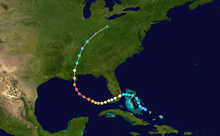







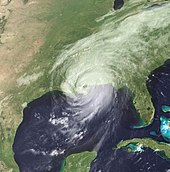
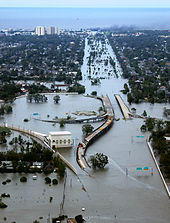
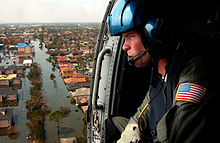
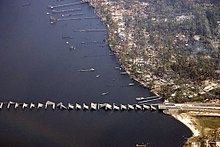

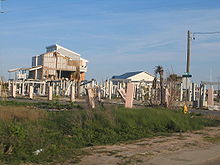

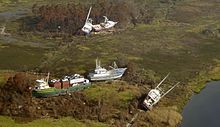



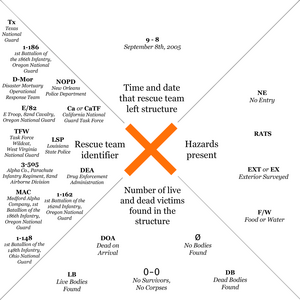
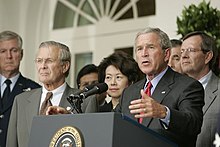
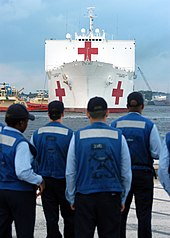
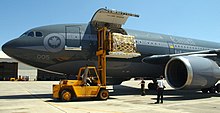
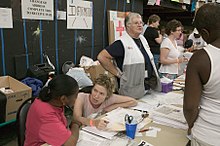
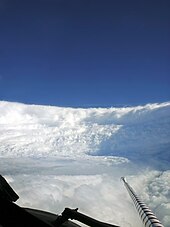

No comments:
Post a Comment